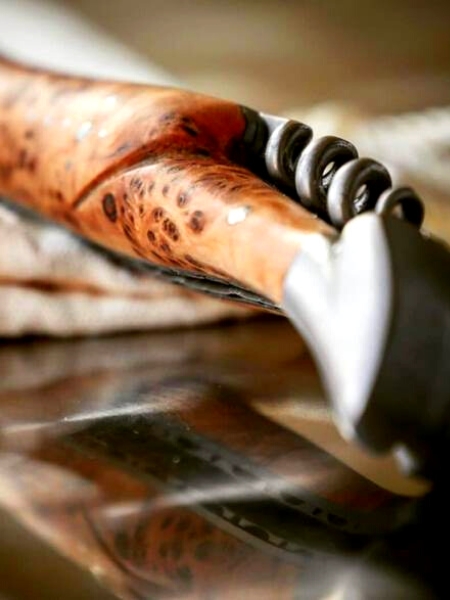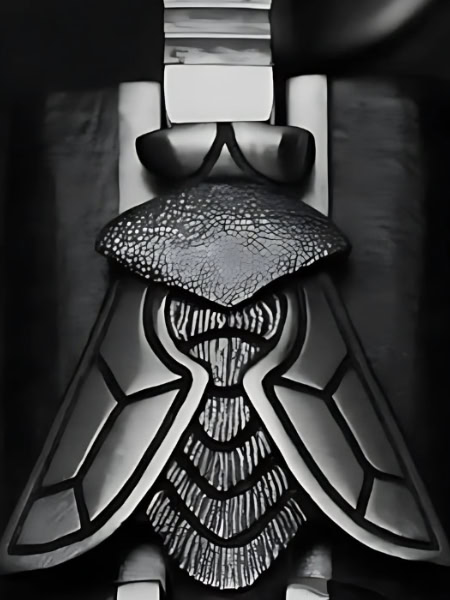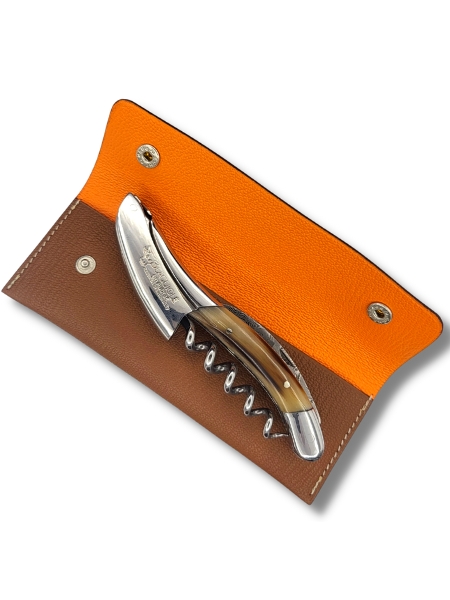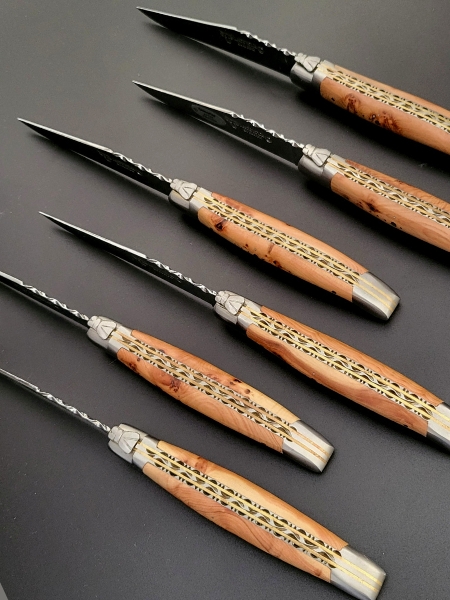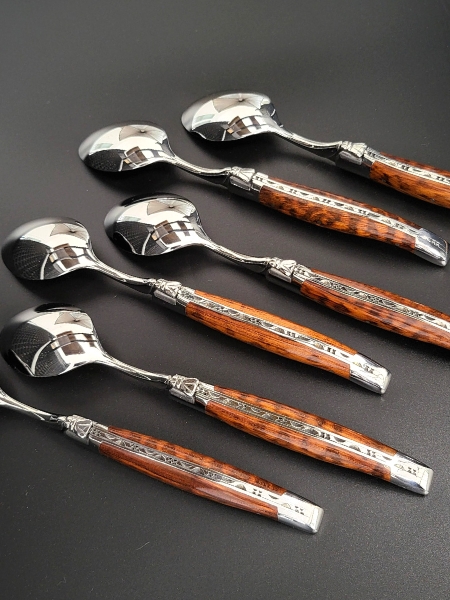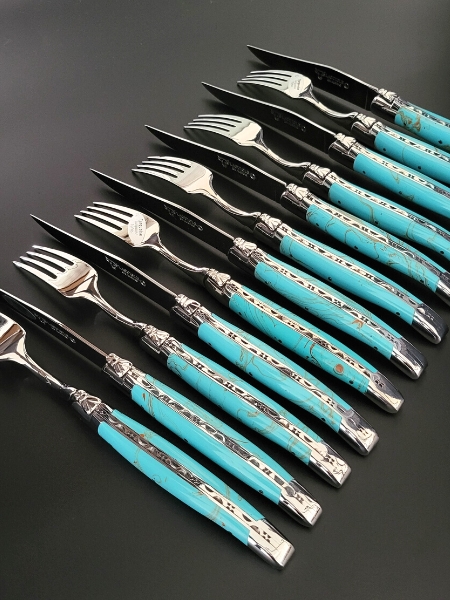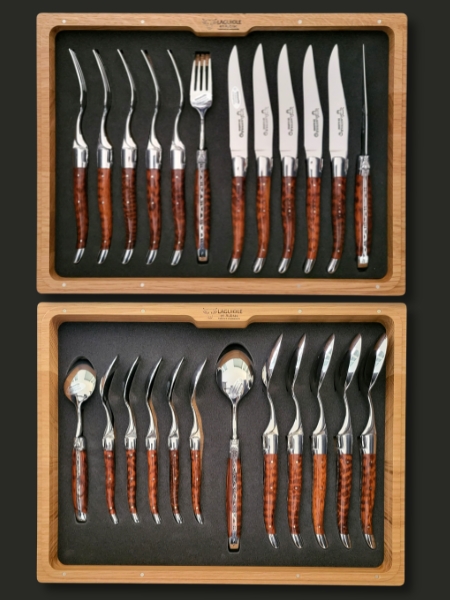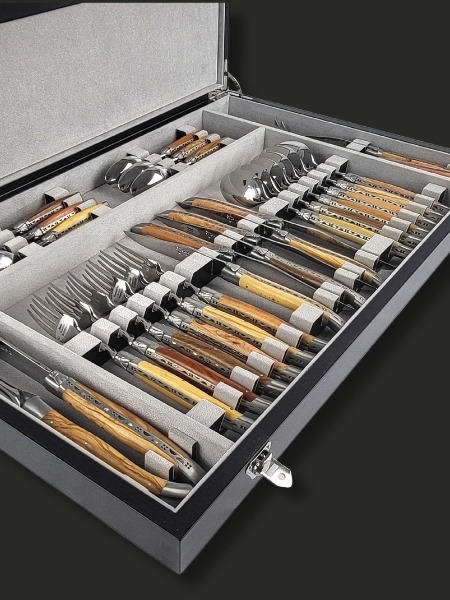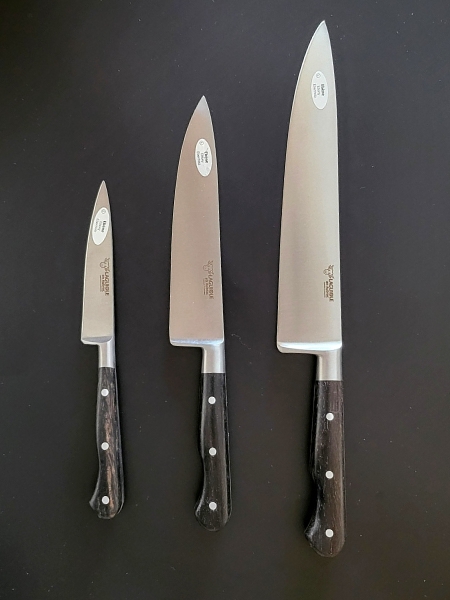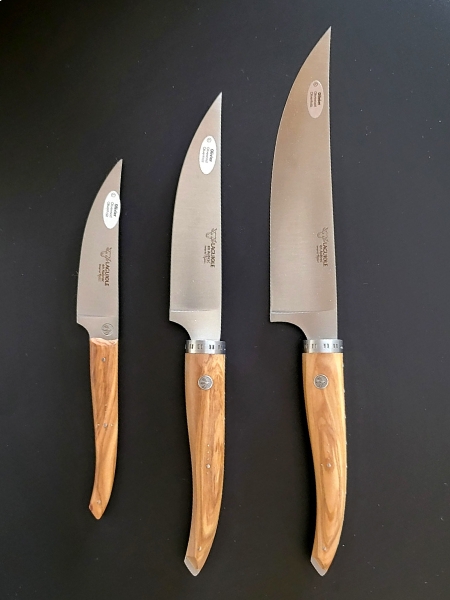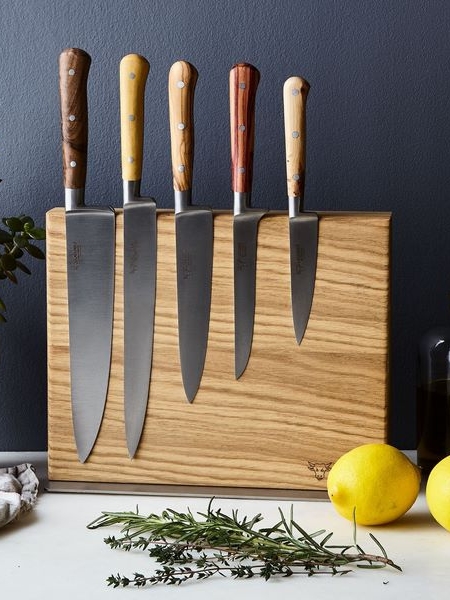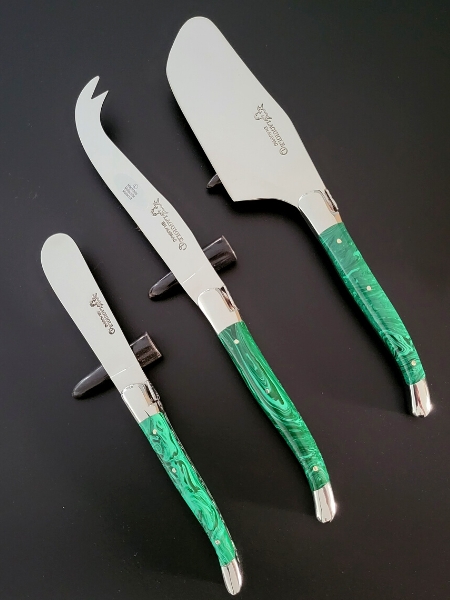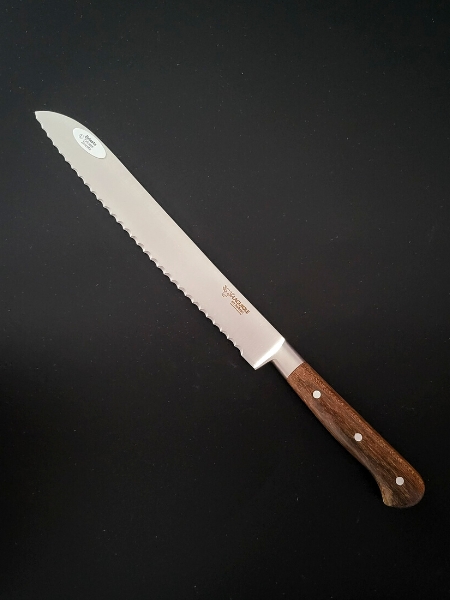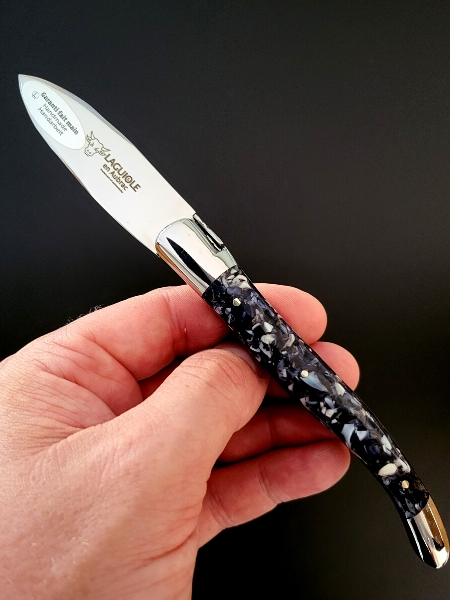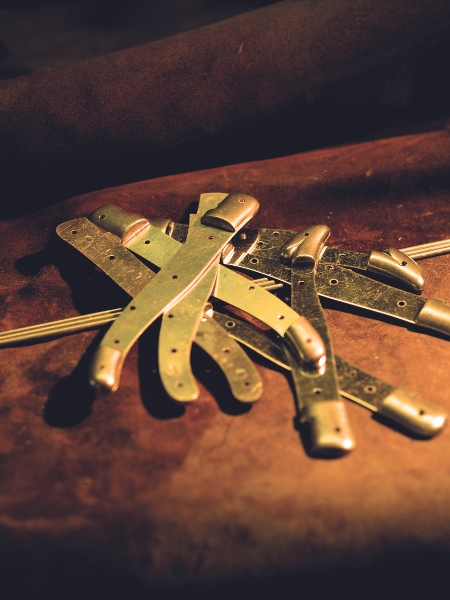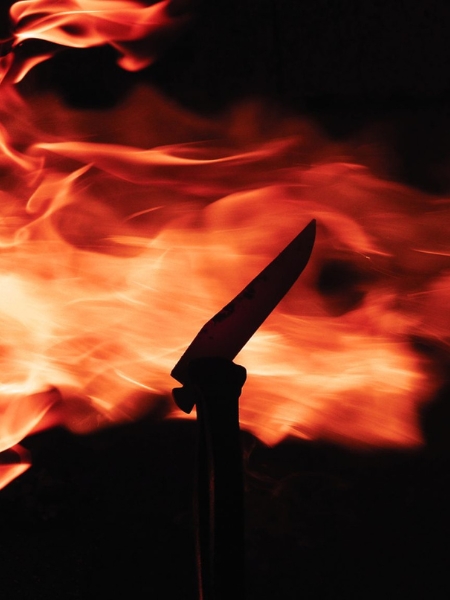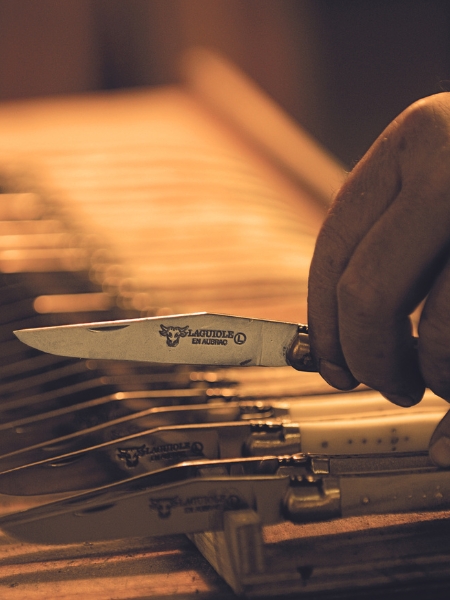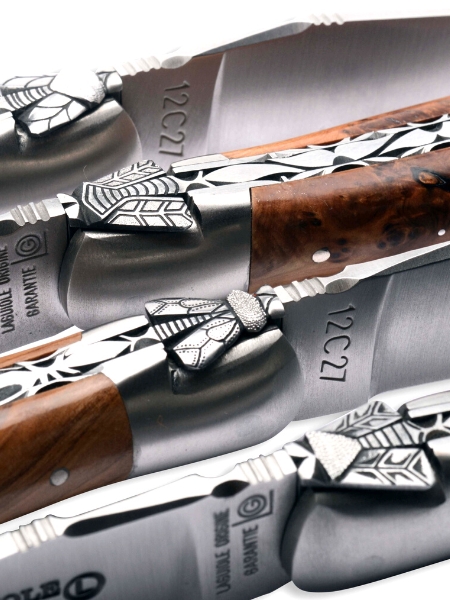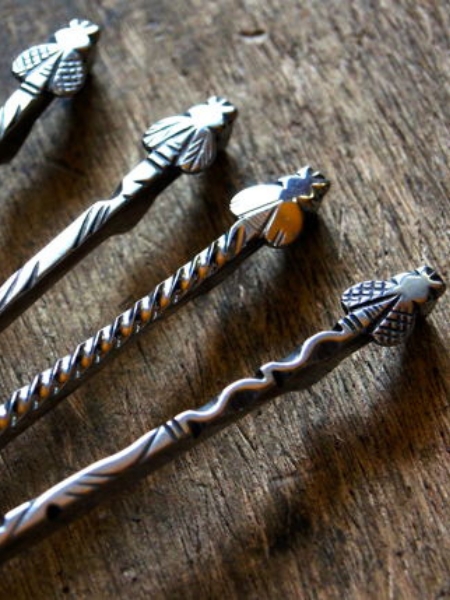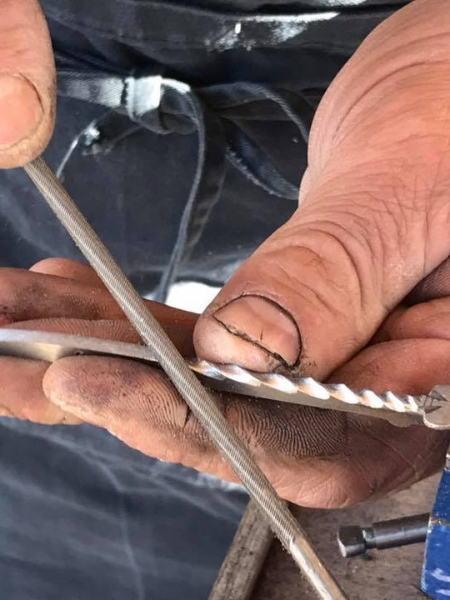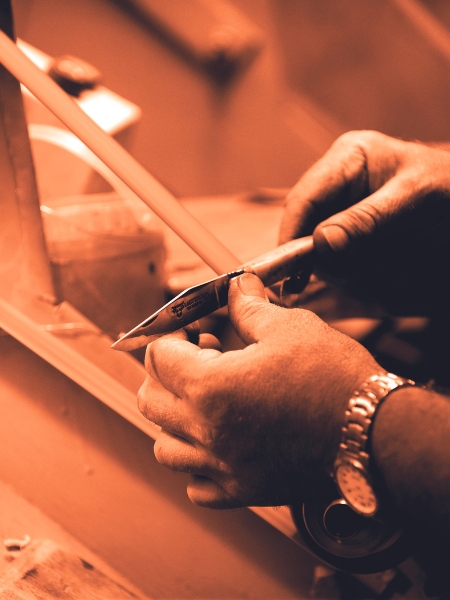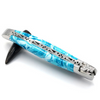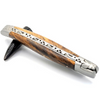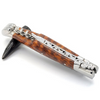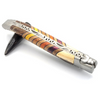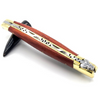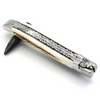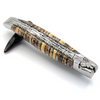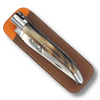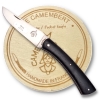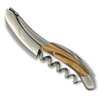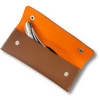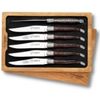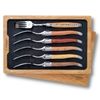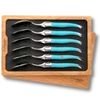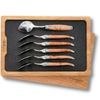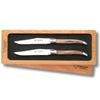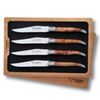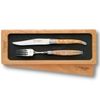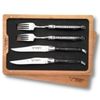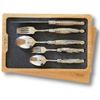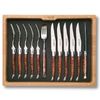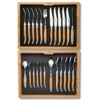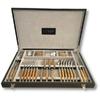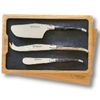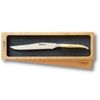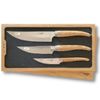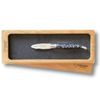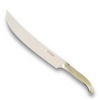
Laguiole en Aubrac
Laguiole en Aubrac is a French brand recognized for the manufacture of high-quality traditional Laguiole knives. Although the history of Laguiole knives dates back to the early 19th century, Laguiole en Aubrac was founded more recently, in 1992. The aim was to preserve and perpetuate the heritage and tradition of making Laguiole knives in the Aubrac region.
The company is located in Espalion, about twenty kilometers from the historic village of Laguiole, in the Aveyron department of France. Laguiole en Aubrac is now one of the main manufacturers of Laguiole knives, known for their craftsmanship, the quality of materials used, and their commitment to preserving the authenticity and cultural heritage of the region.
Laguiole en Aubrac knives are entirely handmade by skilled craftsmen, called “cutlers.” Each knife is unique, the result of meticulous work and particular attention to detail. The materials used for the handles of the knives vary, ranging from precious woods to horns, as well as ivory and mammoth molars, and modern materials such as recycled mussel and oyster shells.
In addition to traditional pocket knives, Laguiole en Aubrac also offers table knives, sommeliers, cheese knives, butter knives, and various accessories related to table art and cooking. The brand is internationally recognized and appreciated by connoisseurs of beautiful objects and quality cutlery.
Christian Valat en quelques mots
Son nom est indéfectiblement lié à la coutellerie Aveyronnaise depuis qu’il a décidé de créer son propre atelier à Espalion, participant ainsi à la renaissance de la fabrication du Laguiole en zone historique d’origine.
Aujourd’hui, Laguiole en Aubrac emploie 72 salariés et contrôle d’autres fabrications, comme le couteau de Sauveterre.
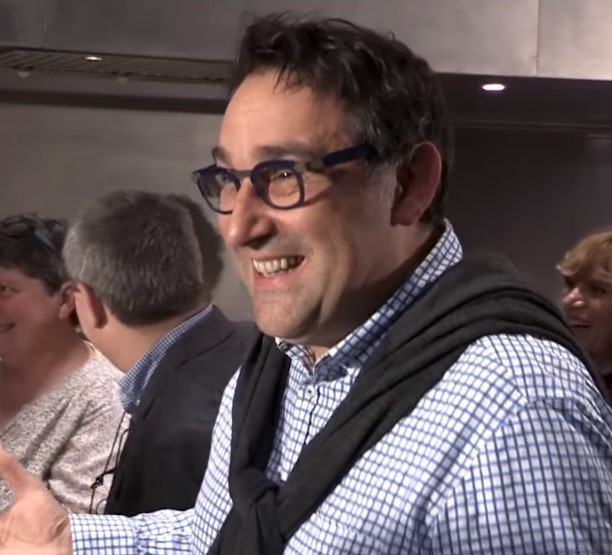

Discover the history and challenges of the famous French Laguiole knife through this enriching interview with Christian Valat, an expert and passionate craftsman. This interview was conducted during the prestigious Maison & Objet fair, an event dedicated to decoration, design, and the art of living, where artisans and creators come to present their works and share their know-how.
In this captivating discussion, Christian Valat traces the origins of Laguiole knives, a symbol of French craftsmanship, which finds its roots in the Aubrac region, in the heart of Aveyron. He also shares the challenges local craftsmen face, particularly regarding the proliferation of counterfeits on the market.
These counterfeits not only harm the authenticity and reputation of Laguiole knives but also threaten the centuries-old know-how and tradition of Aveyron craftsmen. Christian Valat addresses the measures taken to combat this scourge and raises public awareness of the importance of supporting local artisans and purchasing authentic products.
Don’t miss this enlightening interview that sheds light on the richness of French craftsmanship, the stakes of counterfeiting, and the importance of preserving and promoting cultural heritage and traditional know-how.
In the 1920s, as many kniveswere produced in Espalion as in the village of Laguiole. Eugène Salettes Street, named after a cutler from the town, is living proof of this. It is the chosen setting for Laguiole en Aubrac to establish itself. The company was born in 1992, in Espalion, from the will of Christian Valat.
The company originally intended to sell Laguiole knives. But Laguiole, like Thiers, had trouble supplying and did not need a commercial company.
With the help of two engineers and Thierry Valat, Christian’s brother, trained at the Pierre Boule marquetry school, they started in a tiny workshop. However, from the outset, they were determined to turn to exporting to promote Aveyron know-how.
In 1993, in association with three other Laguiole artisans, the Montézic forge was created. “In 1996, we bought everyone’s shares because we were doing the bulk of the activity.”
Quickly, the company stands out for the acuity of its commercial approach, openly focused on high-end products. To ensure its development, it creates its own stores, whose location is chosen with particular attention and, in the end, logical based on potential customers.
The success is immediate. So much so that a second store opened in 1995. Then, in 1999, Saint-Émilion and Paris followed as many foreigners pass through there. These are strategic places to make Laguiole knives known.
In 2003, a new store opened on Neuve Street in Rodez. “A bit out of nostalgia for a cutlery shop that dated back to 1930. An ideal showroom for tourist customers from all backgrounds discovering Aveyron. Customers that the company will tirelessly interest with its know-how, as nearly 70% of sales come from Europe.
The result of an active presence in numerous trade shows, such as Frankfurt or Nuremberg. New York gives international scope to foreign customers fond of French-made craftsmanship. Because the image conveyed by Laguiole en Aubrac is an artisanal image of creation and production in continuity with old Laguiole knife models.
The knife, wide, fits well in the hand. “Proof that we don’t skimp on raw materials (wood, horn…). Because it’s true, we choose to put more material. Some competitors now make “curved” collections. It’s a surprising choice. You either have to put material or not. Or make real curves with protrusions like “plump” ones. Otherwise, nothing.”
It remains to know which materials: “We source some woods from the forest of bees, in Gabon. These are the softest, most beautiful woods in the world.”
Excerpt from the article: source


